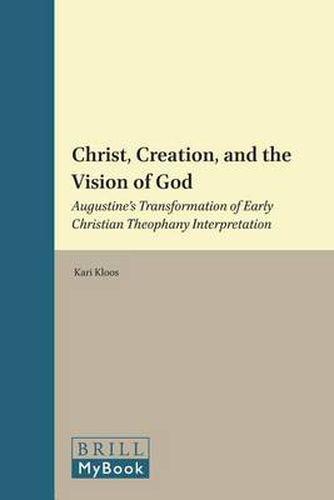Readings Newsletter
Become a Readings Member to make your shopping experience even easier.
Sign in or sign up for free!
You’re not far away from qualifying for FREE standard shipping within Australia
You’ve qualified for FREE standard shipping within Australia
The cart is loading…






Why did early Christian authors interpret the biblical theophany narratives as manifestations of Christ? And how was this interpretation challenged by Augustine? This book explores the theological underpinnings of ancient Christian theophany interpretation, tracing its development into two major exegetical strands. Patristic exegesis of the theophanies involved polemic and the formation of Christian identity, the relationship between vision and spiritual transformation, and theological claims about knowing God through creation. While the christological interpretation developed within particular early Christian beliefs and logic, Augustine challenged it using similar logic and foundational beliefs. Through Augustine’s reconfigured reading, one may see the critical and creative capacity of patristic authors to adapt, challenge, and transform exegetical traditions.
$9.00 standard shipping within Australia
FREE standard shipping within Australia for orders over $100.00
Express & International shipping calculated at checkout
Why did early Christian authors interpret the biblical theophany narratives as manifestations of Christ? And how was this interpretation challenged by Augustine? This book explores the theological underpinnings of ancient Christian theophany interpretation, tracing its development into two major exegetical strands. Patristic exegesis of the theophanies involved polemic and the formation of Christian identity, the relationship between vision and spiritual transformation, and theological claims about knowing God through creation. While the christological interpretation developed within particular early Christian beliefs and logic, Augustine challenged it using similar logic and foundational beliefs. Through Augustine’s reconfigured reading, one may see the critical and creative capacity of patristic authors to adapt, challenge, and transform exegetical traditions.